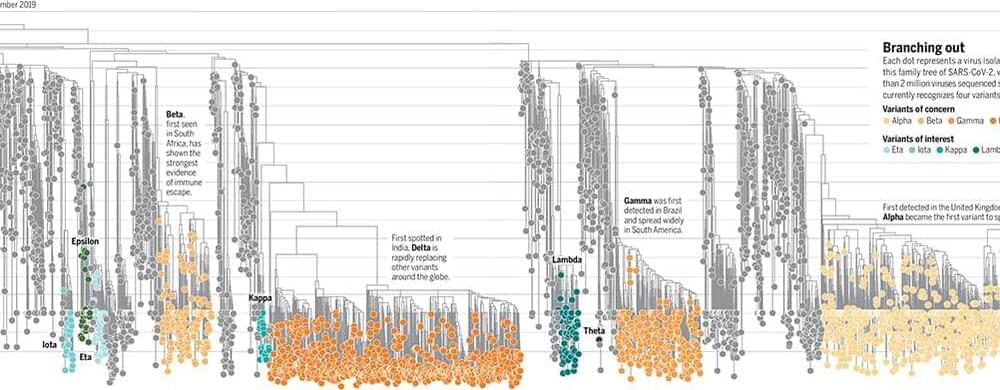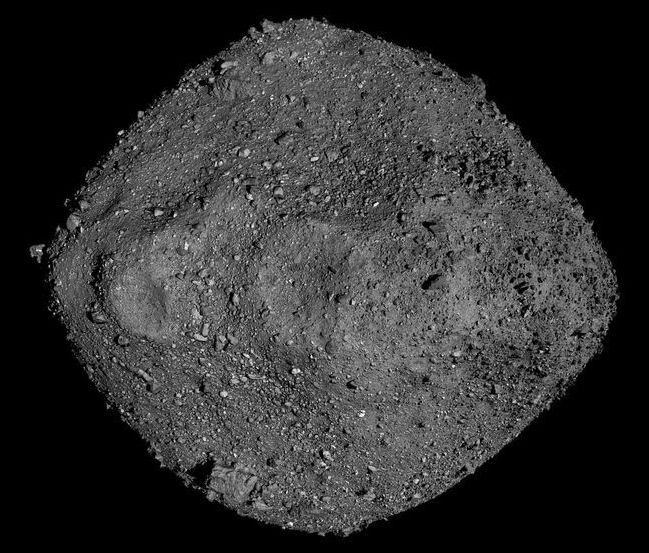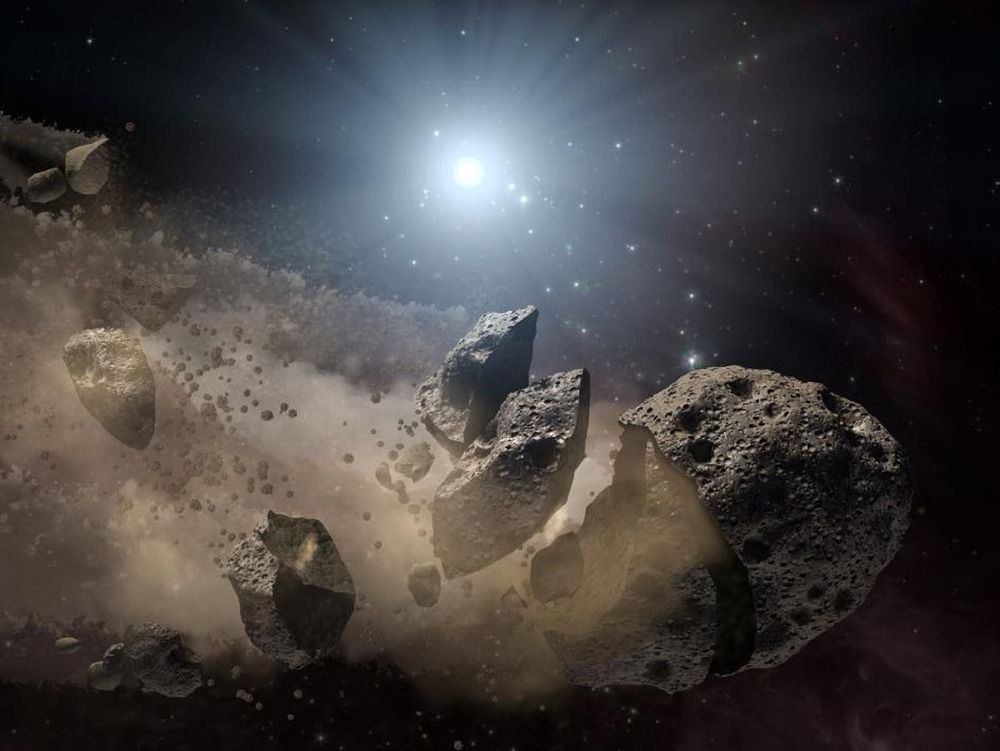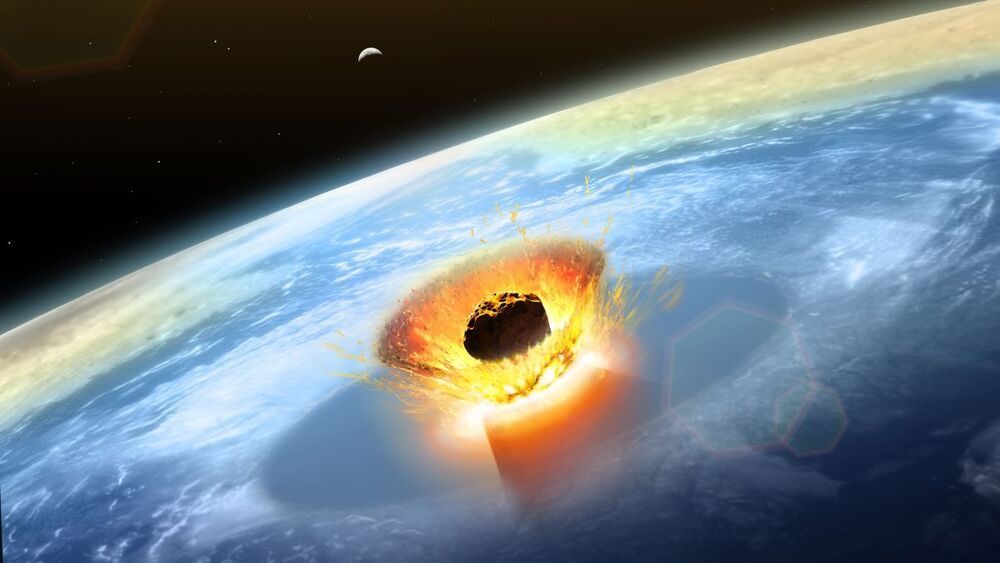Using data from the OSIRIS-REx spacecraft, NASA has updated its predictions about the Bennu asteroid impacting Earth.
Category: asteroid/comet impacts – Page 21

Evolving threat
This #COVID19 is quite weird it just keeps evolving. In a weird way it is pushing evolution through our immune system. The only thing I know that is similar is like the flu or a bigger organism like cancer. Based on this information the virus just keeps evolving not dying off. Among the weird stuff it doesn’t effect cats or most animals or plants. Basically we either need a universal vaccine which is still being developed or we may need quantum radar to kill off the virus in our bodies when it comes out either that or foglet armor to not breathe it in like Ironman. I find it is just an odd virus as essentially it evolves so fast past even human beings abilities to fend it off even with suits it seems to spread so fast that it cannot be completely contained. From dogs that sniff it out it seems sorta everywhere. I know minor things like high dosages of vitamin c work with zinc and probiotics which was the first way to battle it when it didn’t become this whole pandemic because oddly enough it wasn’t a big deal in previous years because the 19th version of the virus. I know some things that kill it off are ultra violet and lysol as well as bleach. So it makes me think it is more a bioweapon where the universal vaccine would work. But oddly enough I am uncertain if it really dies off especially if it is airborne. If we can destroy the virus by reprogramming it to be sterile or innert or even for it to just kill itself off with crispr like we have done with mosquitoes to stop malaria. We can easily make new vaccines which is good but nearly every year or so there is an entirely new version. This isn’t new but it sorta is like the flu. But there are some theories that I sorta have where it seems to be near heat sources where it grows. Like my uncle who had the virus which we had him turn off electricity and also do vitamin c probiotics and zinc which did work. He ended up getting an antibody naturally this way. I personally got the vaccine and found that it does work but when the new delta version came out it did the same as the last one it sorta just randomly evolves for some reason even smells similar but oddly enough it still remains even after all the lysol. So to me it seems like a bioweapon that is self evolving which is we could use the mechanism to essentially evolve ourselves taking the components of it. If this was a nanobot swarm I would say it spreads from radio waves or something but this virus keeps spreading in odd ways like even from the sky. Which sorta makes me believe that it is sorta being manipulated maybe by a signal perhaps or it has its own program inside it. It reminds me of a Grey goo nanobot swarm that keeps evolving but the biological virus version. I mean it could actually be an exterrestial virus there was a meteorite that came around then and odd things that followed from the meteorite like dogs attacking people and cats attacking people even huge mountain lions. Which makes me think of a sorta an invasion of something. We need to maybe get the viruses input and output to find what it is going to do next. All and all seems odd because even other viruses don’t evolve or like fly or spread that fast. Ideally we should have cyborg nanobots running through Ironman in avengers endgame but so far our best better is treating it like the flu pumping out a new vaccine each year till we know a universal vaccine like using henreitta lacks immortal unlimited cell division cells like they did with polio. But till then we need to keep watching the virus as seems sorta more than it appears based on its original version.
See allHide authors and affiliations.
NOTE: We only request your email address so that the person you are recommending the page to knows that you wanted them to see it, and that it is not junk mail. We do not capture any email address.

NASA will attempt to deflect an asteroid, impact to happen next fall
NASA calls it the “Double Asteroid Redirection Test,” or DART for short, and the mission involves NASA launching a spacecraft that will rocket towards the Didymos binary asteroid and collide with it. NASA wants to test if the impact of the spacecraft colliding with the asteroid will be enough to alter its course. It should be noted that the asteroid doesn’t currently pose any threat to Earth and that NASA is purely conducting this mission for research purposes.
According to NASA’s latest update on DART, the spacecraft recently received solar arrays that will be a core component to getting the spacecraft all the way to the Didmos asteroid system. The spacecraft will travel for ten months to reach the asteroid system and will launch aboard SpaceX’s Falcon 9 rocket this November. When the spacecraft collides with the asteroid, it will be traveling at around 15,000 mph, and NASA will have Earth-based telescopes aimed at the asteroid for clear observation.
For more information on this story, check out this link here.

NASA forecasts an Empire State-sized asteroid could hit Earth
O,.o…zap it o.o
Scientists at NASA have adjusted their forecast of an Empire State Building-sized asteroid it predicts could potentially smash into the planet.
The chances of the large rock hitting the Earth have increased. In a press conference Wednesday, NASA said there was a 1-in-1,750 chance the asteroid, Bennu, could smash into the Earth between now and 2300. It’s a higher chance than previously predicted at 1 in 2,700 chances.
Listen to your favorite News/Talk station now on Audacy.
“It’s not a significant change,” lead research author Davide Farnocchia, a scientist at the NASA Jet Propulsion Laboratory in Pasadena, California, according to the New York Times. “I’m not any more concerned about Bennu than I was before. The impact probability remains really small.”

Asteroid impact chances increased
A study by NASA has used precision-tracking data from the Origins, Spectral Interpretation, Resource Identification, Security-Regolith Explorer (OSIRIS-REx) spacecraft to more accurately plot the route of potentially hazardous asteroid Bennu from now until the year 2300.
The agency’s new data, published this week in Icarus, has significantly reduced the uncertainties related to its future orbit, and improved scientists’ ability to determine the total impact probability and predict the orbits of other asteroids.
“NASA’s Planetary Defense mission is to find and monitor asteroids and comets that can come near Earth and may pose a hazard to our planet,” said Kelly Fast, program manager for the Near-Earth Object Observations Program at NASA Headquarters in Washington. “We carry out this endeavour through continuing astronomical surveys that collect data to discover previously unknown objects and refine our orbital models for them. The OSIRIS-REx mission has provided an extraordinary opportunity to refine and test these models, helping us better predict where Bennu will be when it makes its close approach to Earth more than a century from now.”


Scientists find origin of asteroid that killed the dinosaurs
Astronomers believe that they have discovered the origin of the asteroid that wiped out the dinosaurs.
The six mile-wide asteroid which struck the Earth 66 million years ago and ended the 180 million year-long reign of the dinosaurs, was the cause of what is known as a Chicxulub events. It landed in what is now the Yucatan peninsula in Mexico and formed the Chicxulub crater.
Scientists had examined the remains of the ancient rock through the samples on the Earth and within drill cores, which revealed that the debris came from a carbonaceous chondrite class of meteorites – some of the most pristine material in the entire solar system.

The End of the Dinosaurs | SpaceTime S24E91 | Astronomy & Space Science News Podcast
The Astronomy, Technology, and Space Science News Podcast.
SpaceTime Series 24 Episode 91
*Astronomers zero in on source of the impactor that wiped out the dinosaurs.
A new study claims the impactor believed to have wiped out and 75 percent of all life on Earth 66 million years ago including all the non-avian dinosaurs — likely came from the outer half of the main asteroid belt between Mars and Jupiter.
*Producing matter out of pure energy.
Scientists have directly converted pure light energy into matter in a single process for the first time.
The findings reported in the journal Physical Review Letters involved the creation of Electrons and their antimatter counter parts positrons — by colliding quantum packets of photons – light particles.
*Discovery of a galactic stream of galaxy clusters.
Astronomers have discovered a never-before-seen galaxy cluster with a black hole at its centre, travelling at high speed along an intergalactic road of matter.
*Solar Orbiter and BepiColombo making space history with double flyby of Venus.
As we go to air tonight the European Space Agency is making space history with two of its space craft6 undertaking almost simultaneous flybys of the planet Venus.
*The Science Report.
New US congressional report says COVID-19 leaked out of Chinese Government Wuhan Lab.
Wearing masks and social distancing even when vaccinated key to combat new COVID strains.
Rising sea levels may mean fewer eruptions from volcanic islands.
How slowing of the planet’s rotation could have paved the way for life on Earth.
Skeptic’s guide to low vaccination and low IQ.
For more SpaceTime and show links: https://linktr.ee/biteszHQ
Your support is needed…
SpaceTime is an independently produced podcast (we are not funded by any government grants, big organisations or companies), and we’re working towards becoming a completely listener supported show…meaning we can do away with the commercials and sponsors. We figure the time can be much better spent on researching and producing stories for you, rather than having to chase sponsors to help us pay the bills.
That’s where you come in…help us reach our first 1,000 subscribers…at that level the show becomes financially viable and bills can be paid without us breaking into a sweat every month. Every little bit helps…even if you could contribute just $1 per month. It all adds up.
By signing up and becoming a supporter at the $5 or more level, you get immediate access to over 230 commercial-free, double, and triple episode editions of SpaceTime plus extended interview bonus content. You also receive all new episodes on a Monday rather than having to wait the week out. Subscribe via Patreon or Supercast…and share in the rewards. Details at Patreon www.patreon.com/spacetimewithstuartgary or Supercast — https://bitesznetwork.supercast.tech/
Details at https://spacetimewithstuartgary.com or www.bitesz.com

NBD, There’s Just a Massive Asteroid Hurtling Past Earth This Month
Should you be worried about the massive space rock that could, theoretically, spell disaster if it were to make landfall on terra firma? No, you shouldn’t. But that doesn’t mean you should ignore it either.
The asteroid, called 2016 AJ193, is just under a mile wide and moving at a speed of 58538 miles per hour, according to EarthSky. Its closest encounter with Earth will occur on August 23 at 11:10 a.m. ET, and experts note that anyone trying to spot the asteroid in the wild will have the best chance of doing so before sunrise. If you’re trying to catch a glimpse of it, you’ll have to use a telescope.
Despite the “potentially hazardous” label designated by NASA, EarthSky is quick to allay any fears of impending apocalypse (at least from this particular asteroid) because it won’t hit Earth.